Hi, I am Aurora, the new communications intern at SNPT! I am super excited to be a part of the work being done at the Trust; I love hiking and exploring the outdoors, and I want to be a part of protecting the spaces I love. As I learn about the park and what it’s like to work at a nonprofit organization, I hope that you will follow along as I discover the hidden jewels of Shenandoah National Park.
On Saturday, June, 10th, I attended my first project in the park: a scientific survey that addressed cold waters in a warming world and the health of brook trout populations in Shenandoah’s streams. At first, when my alarm went off at 6:30 am, I grumpily got out of bed to head to the park, but after getting coffee and seeing the green rolling mountains of Shenandoah, I started to feel excited about capturing photos and videos of science in action!
It was only my second week on the job, and I was still learning the conversations around environmental conservation at the Shenandoah National Park Trust (SNPT). Going into my first park project as a communications intern, I was nervous about being perceived as an outsider, recording, and reporting on the project while getting in the way of the project unfolding around me. I didn’t want volunteers to feel uncomfortable with my questions, but it was my job to document the day. How could I make the volunteers feel seen and appreciated without seeming like paparazzi? It was a new challenge for me to figure out how I would represent someone authentically and accurately while also doing my job of engaging the public to connect with and support Shenandoah.
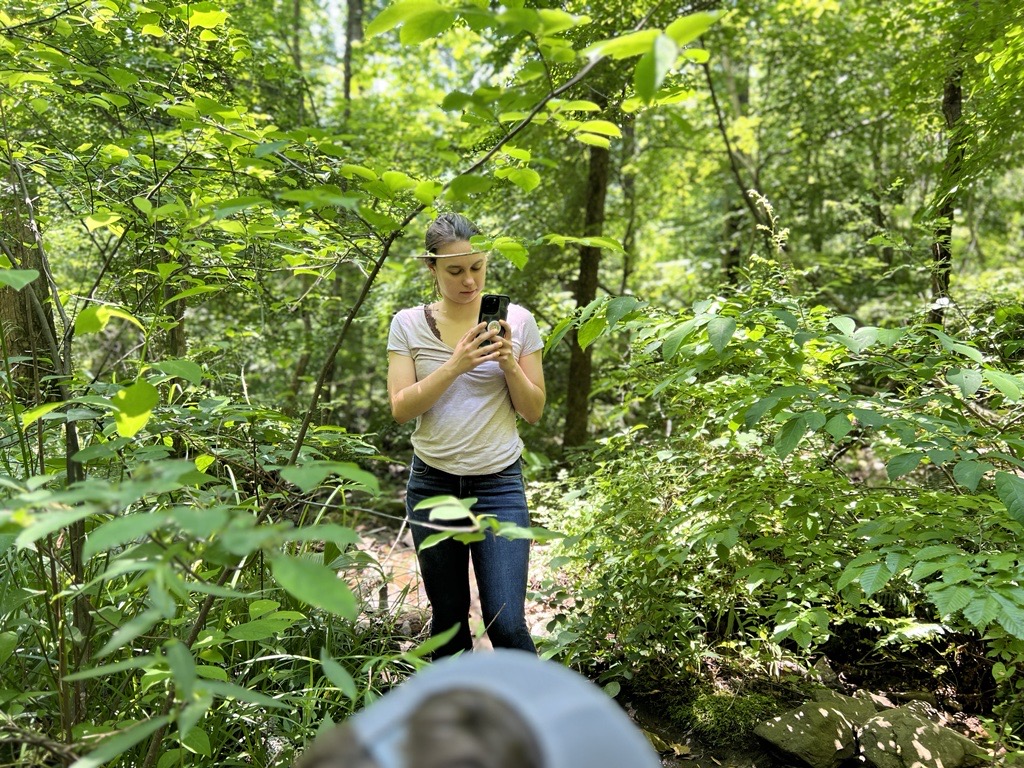
When I got a chance to go out into the field, I jumped at it! But it took a while for me to feel comfortable being in the middle of the scene while also recording it on my phone.
I work behind a computer screen, so when I had the chance to tag along for field work and report on it, I jumped at the chance to discover the meaning of conservation to volunteers, the Trust, and myself. I watched every volunteer who arrived at the park; people showed up excited and prepared to help mitigate climate change without a sense of panic, but a sense of direction and purpose; we were all there to help find answers and support our park. As I watched, I felt a sense of determination and collective passion for the work being done.
This passion and determination leads to proactive work and helps motivate me to be more involved in conservation; I am reminded of the future projects I will be a part of this summer and the reason why I reached out to SNPT.
The Trust is helping to preserve native species through this project, Cold Water in a Warming World: Protecting Native Brook Trout, with an initiative of collecting water samples from Shenandoah and filtering out environmental DNA (eDNA) to be sent to a lab that measures brook trout eDNA levels. eDNA is organic materials left behind by the fish, like scales and fecal matter; by measuring the amount of eDNA found in the streams, biologists can estimate the health of the brook trout populations.
This project is important to the health of aquatic ecosystems and the Shenandoah National Park’s fishery team because it provides data on the location of thriving brook trout populations and the location of declining populations due to warming waters. Understanding how species are reacting to changes in the climate helps the park understand how they need to adapt to meet the emerging needs of threatened species.
The project day started with park rangers setting up a station with a water pump and water collection equipment for volunteers. Volunteers arrived eager to get on the trail before we could finish organizing the boxes of equipment. People trickled in throughout the day, picking up collection kits with gloves, data sheets, water bottles, and instructions on how to get to their assigned stream. Fishermen from Trout Unlimited arrived at the park ready to collect water samples from over 80 streams, and they arrived ready to hit the trail just as quickly as they arrived back at the site with collection bottles full.
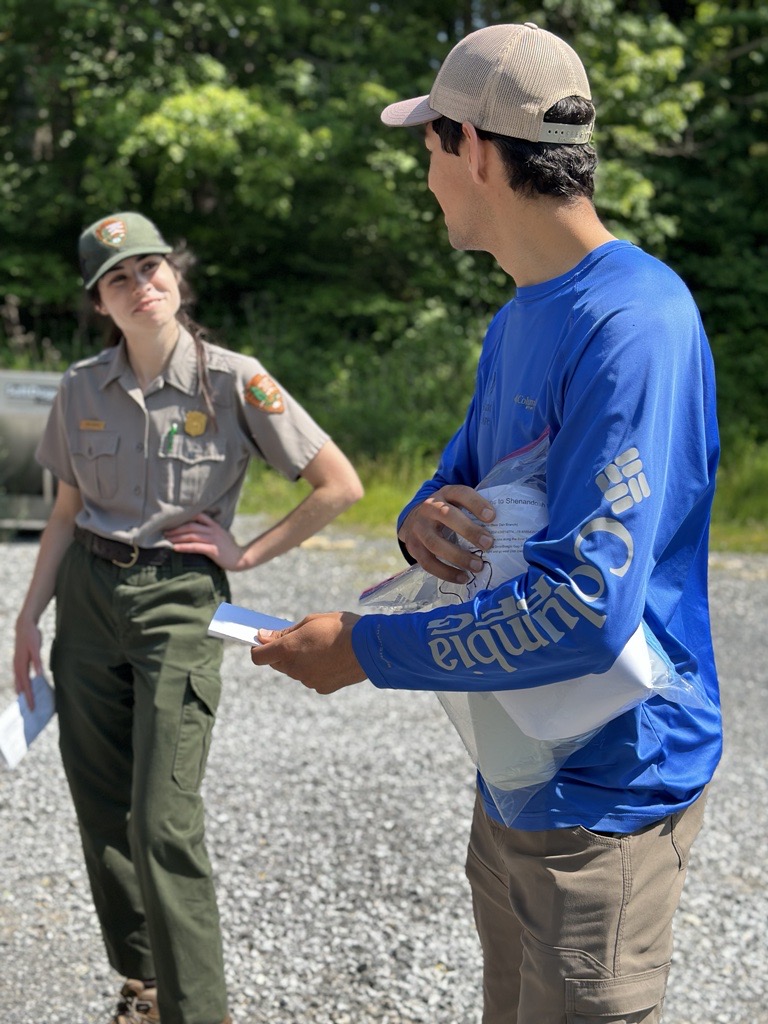
Erin Drumm, a ranger on the park’s Fisheries Team, greets a volunteer.
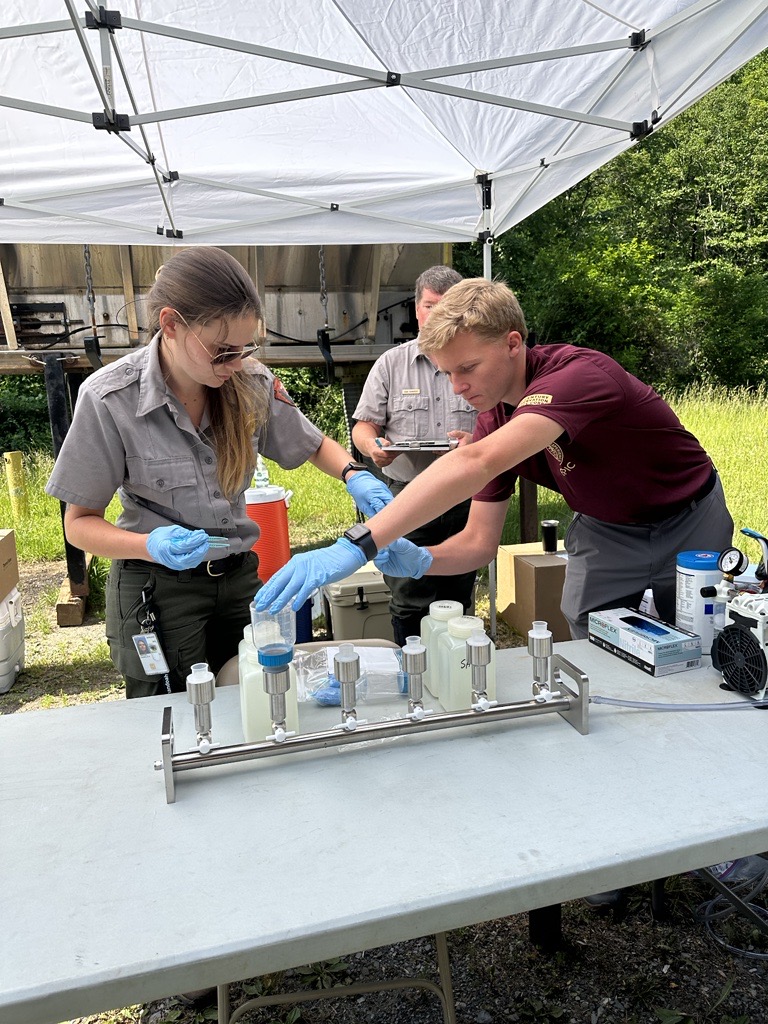
Danielle Winchel and Nick Campany prepare the vacuum manifold to begin filtering water samples.
The water was either put on ice for preservation or directly filtered with a water pump. I watched park biologists test the water samples efficiently by recording filtration times and packaging and labeling each filter carefully with gloves to send to a lab that will measure eDNA levels. Park ranger, Danielle, explained any tiny amount of unsanitized equipment or disturbance in the water like temperature or contamination could affect the accuracy of the trout eDNA readings. My curiosity grew about why this noisy water pump was so important, so I grew more comfortable asking questions; excitedly, I asked the rangers if I could be a part of the collection process in the field. By seeing every step of the project’s process, I was able to understand the impact fundraising can have on conservation efforts and beyond in the community.
Fundraising for conservation involves connecting people through their own unique connection with Shenandoah. My own connection with SNPT grows as I experience the meaning of “We Are Shenandoah.” Fundraising brings people together to support a common cause, but I’m also finding through experiencing philanthropic work firsthand that it involves respecting everyone’s unique relationship with the cause as I saw with the fishermen who showed up from all around Virginia.
I watched people come and go, arriving to help and then coming back later in the day, so rangers could test the water samples. However, something was missing from my perspective of the project as I was waiting for the water to be filtered, so I quickly raised my hand to be a part of collecting water samples.
We were given instructions on where to park and the general coordinates of the stream. Our instructions read, “Park and find the stream.” Despite not finding the trail, ACE fishery interns, Nick and Andrew, walked through the forest like there was a trail and they had walked it several times before.
Once finding the stream, they slowly pulled out plastic gloves from our collection kit, careful not to touch the water bottles or any of the testing gear. Eager to explain the process, fishery interns explained it is very important that the water be kept in similar conditions to natural streams.
Despite the challenges of the terrain, getting to film in the field and making new discoveries is why I chose to step out from behind my laptop and my phone screen. I was simultaneously becoming a fish out of the water, while also feeling for the first time a connection to the work I was doing.
I returned to the event site after an eventful time of stumbling through the woods and waited for the water pumps to filter all the samples. The fisheries team worked diligently, recording the exact times of every sample filtered. The pump was a constant buzz in the back of my head that anchored me to my purpose of being here today, despite my tired legs and hunger.
Through this field experience, searching for the stream and interviewing volunteers, I found value beyond the knowledge of the health of the brook trout. I looked into the streams and saw native Black Nose Dace swimming in shallow pools to water snakes dancing across the width of the stream to frogs jumping along the stream banks. When I looked closer, I saw the reflection of myself and a history with the land that I hadn’t taken the time to understand. The cold streams remind me of a connection to my family, the land, and the respite from Virginia’s summer heat. The fish are also looking for a break from the heat, and from working within the Trust, I have learned that water temperatures are rising, which is decreasing native fish populations.
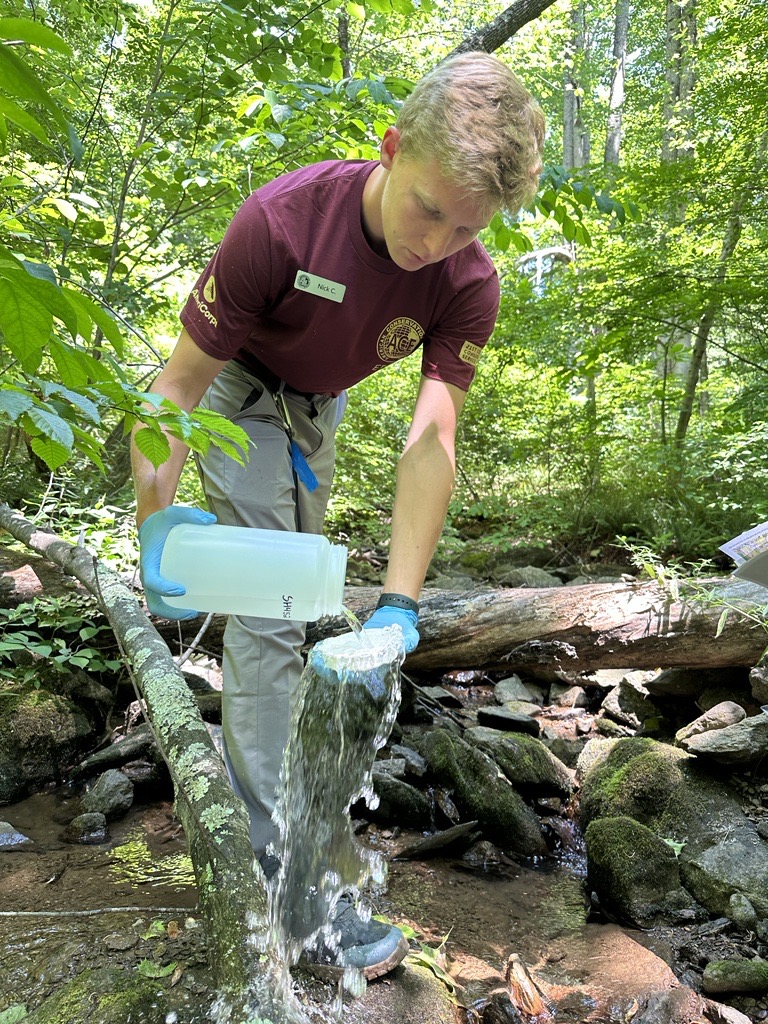
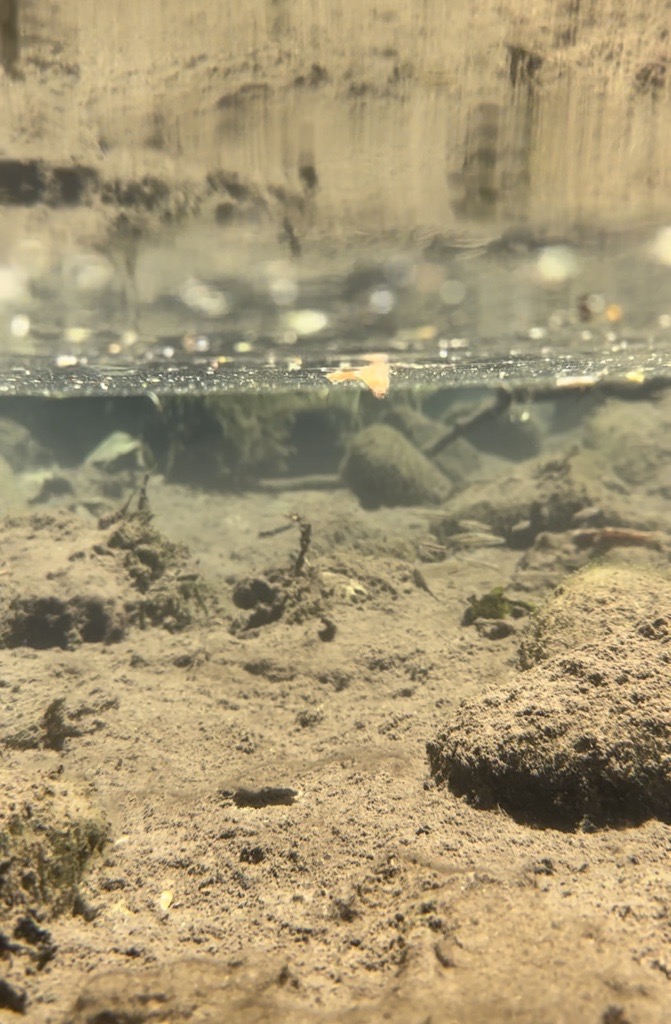
The Trust is supporting these projects because they are ensuring wild spaces for future park visitors. As an intern, I was worried about representing volunteers and the Trust’s vision accurately, but I think the work being done speaks for itself.
Experiencing conservation with people in the park all day gave me the opportunity to embody and explore my own relationship with nature. I realized that online platforms offer an opportunity to directly engage with Trust and Park supporters and share an active, hopeful narrative about the work people are already doing to protect our natural spaces. The Trust might be small in comparison to climate change, but when one person takes the initiative to apply for a grant and do the work, partners and hundreds of volunteers turn up to help. While there was still a sense of urgency and efficiency around protecting brook trout that lent to the project’s success, everyone involved focused on achievable steps to study the changes in brook trout populations, so they could begin to ask the question; how can we better protect and support these native species?
We are still waiting on the results from the streams sampled by the fisheries team, but I am excited to find out how the cold-water fish are adapting to warmer climates! While the beginning of my day might have started with me grumpily waking up to my alarm, the end of the day was filled with nothing but gratitude for my experience with the Trust. How many of my friends at school can say they trampled through the woods and stuck their phones underwater for their internship?
A special thank you to The Bass Pro Shop and Cabela’s Outdoor Fund for supporting this project.

See how the day went and learn about the process from the Fisheries Team, from meeting volunteers to collecting and filtering water samples!

